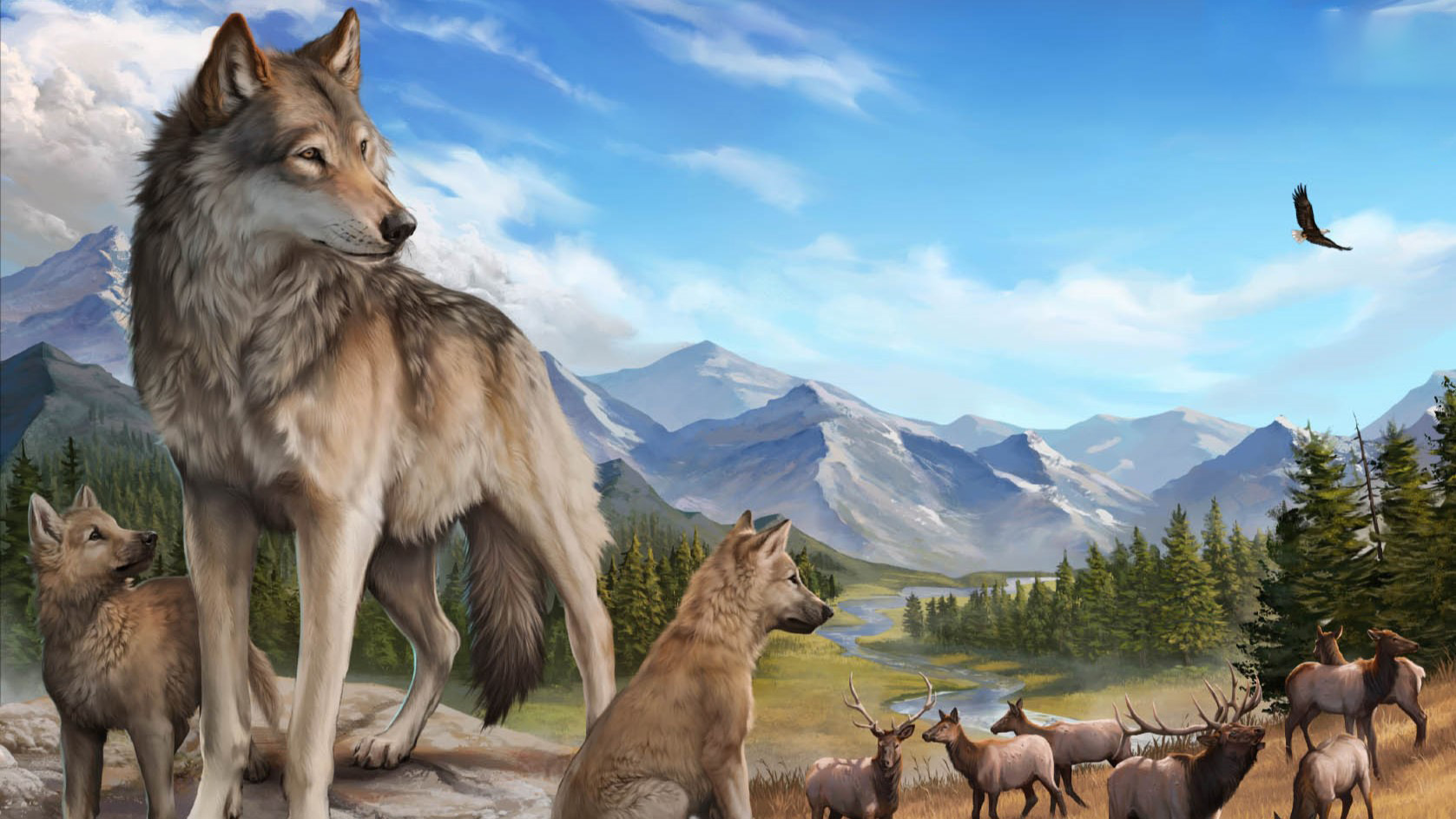Dispersals in the Saga
Today's devblog looks at an important part of the upcoming WolfQuest Saga* -- how your pups will disperse when they grow up. This gets complicated, so I'll take it one piece at a time.
[previewyoutube][/previewyoutube]
[h3]NPC Pup Dispersing[/h3]
As the years go by, your pups grow up and, sooner or later, they will disperse, heading out on their own to find or form a pack. Pups can start dispersing as yearlings, but two is the most common age for it, particularly in the fall and early winter. So somewhere between 15 months of age and 3-4 years of age, your pups are almost certain to leave your pack and seek their way in the world. Since your pups are, of course, known to you, they'll appear on the Known Wolves panel, so you can keep an eye on them and if they find a mate and form a pack, or join an existing pack, or leave the game map in search of greener fields elsewhere.
However, not every dispersal is successful. Sometimes a wolf will return to its natal pack for awhile before trying again. It'll be nice to have them back with the family pack for awhile.
[h3]Making Pups Playable[/h3]
The game has always let you "grow up" any of your surviving pups to make them playable adult wolves. We wanted to keep this option in the expanded context of the Saga. Essentially it's the same, except that pups must now survive to age one before they become playable in the Family Tree. (If we had fully designed and built the entire game before releasing it, we probably would have made pups playable only after they've dispersed in the game -- but now that's too restrictive and likely frustrating, since it can take several game-years for a pup to disperse, and some may not survive that long.)
Somewhat related: The unlockable coats work the same way as before -- if a pup has an unlockable coat, it's unlocked when you finish the Loaf at Rendezvous Site quest. You don't have to keep them alive until they're a year old to unlock the coat.
[h3]Branching Out as Dispersed Pups[/h3]
This is where it gets complicated. When a pup disperses, we thought it would be fun to switch over and play as that pup within the same game universe, with that continuity of location, rival packs, territories etc. So when one of your pups disperses, you are notified about that event, with the option to switch roles and play as that dispersed pup (either immediately or later). If you choose to switch, the game splits off with you as that young wolf in the Find a Mate quest (since that pup has already learned to hunt in the Young Hunters quest). As a freshly-dispersed wolf, your natal or birth pack will tolerate you for awhile, so you can sleep in their territory safely while you search for a mate. (Thoug unlike NPC dispersals, as a player-wolf you can't rejoin your natal pack). But once you find a mate, your old pack becomes a rival pack, with no holds barred! (There is some evidence in Yellowstone that related wolves in rival packs are less hostile to each other, but we concluded that it wasn't feasible to incorporate that into the game.)
When you switch to play as the dispersal, the game world is carried over, exactly as it was. But of course, as the days and months go by, it will gradually change. So, if you later load the game with your original wolf (the parent of the dispersal), those two versions of that game universe won't be kept in sync, as you the player and all the NPC wolves make decisions about their lives, their packs, their territories. So yes indeed, the multiverse coming to WolfQuest, with branching universes and multiple realities. Perhaps a bit weird, but we decided on this design so the game can support a range of role-playing and storytelling preferences.
To keep things from getting too confusing, each wolf (whether created by the player, or a grown pup) has one identity. This is not that odd, except that pups become playable in the Family Tree before they disperse in the game. So if you start a new game with a grown pup via the Family Tree, but then later go back to the original game save when they're still a yearling and play through that so they eventually disperse, you'll have to make a choice. To switch over and play as that dispersed pup in that same game universe, you'll have to override the that wolf's save file (resetting its age to whatever age this dispersing pup is). You can't have two versions of that pup, just like you can't have two versions of any of your wolves.
So, as I said, it's complicated! But it's all working well in our playtesting so far. And the Saga in general is really shaping up. We still have to finish a few more features, and of course do much more playtesting and bugfixing, but we are excited to get the Saga into everyone's hands, later this year.
* The upcoming WolfQuest Saga is "the rest of the game," where your pups grow up as you have a new litter each year. Time will continue progressing through the years until you die. We expect to release it later this year (but we have not set a release date).
